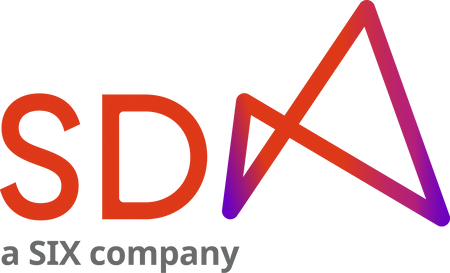Hi Mathias! Everybody is talking about CBDCs right now, could you elaborate on wholesale CBDC and retail CBDCs and how widespread CBDCs are?
The future of Central Bank Digital Currencies (CBDCs) is incredibly promising, they are potentially one of the most significant innovations in the evolution of money. There are two fundamental types of CBDCs: wholesale and retail. In the wholesale model, access to central bank digital currencies is limited to a selected group of commercial banks and other financial institutions, while in the retail model, access is widened to encompass corporates, businesses, and the broader economy, including all consumers. Presently, we see more emphasis on wholesale CBDC efforts in advanced economies with well-developed interbank systems and capital markets. Conversely, retail CBDC projects are more prevalent in emerging economies, where financial inclusion is a key goal.
As per the Bank for International Settlements, the fact that 90% of central banks worldwide are currently either studying or piloting CBDCs underscores their significance.
In the past years, SDX has been working with the Swiss National Bank (SNB) on integrating wCBDCs into the settlement process. What is the significance of this project and its implications for the financial industry?
The significance of this work is paramount for the financial industry. The collaboration between SIX Group (SDX and SIC), the Swiss National Bank (SNB), and the BIS Innovation Hub (Swiss Centre), as well as selected market participants (SDX Members) has already seen successful experiments with wholesale Central Bank Digital Currencies (wCBDC) on the SDX Digital Asset platform.
These experiments, Helvetia Phase 1 in 2020 and Helvetia Phase 2 in 2021, were aimed at testing the issuance and settlement of digital assets in wCBDC. Building on these insights, we will test the issuance of real wCBDC on SDX for a limited time and test selected transactions with market participants in the project. We are taking a critical step towards the tokenized, DLT-based capital markets of the future.
SDX’s achievement to date underpins its significance as the most advanced FMI-regulated player worldwide, with multiple live Digital Bonds issued by our members and listed on the Stock Exchange for trading on our DLT-based custody and settlement infrastructure.
How can wholesale CBDC support digital transformation and innovation?
Wholesale CBDC has the potential to be a catalyst for the adoption of digital assets and will significantly advance Blockchain-based innovations within the financial industry. Its impact can be profound for several reasons.
First of all, it’s essential to understand the pivotal role that cash plays within capital markets, representing 50% of every digital asset transaction particularly in the context of Delivery vs Payment (DvP). To fully leverage the benefits of blockchain applications and a global, distributed settlement network for digital assets, cash needs to be available in token form. Tokenized cash facilitates on-chain atomic settlement of digital assets, paving the way for further automation and new use cases through “programmable money.”
While there are existing payment and settlement Tokens, such as stablecoins, they come with notable drawbacks, primarily related to counterparty risks associated with the issuer of these stablecoins. Often details around stablecoin issuers are not fully transparent (e.g., regulatory status and oversight) and there is also lacking evidence whether the stablecoin are really 100% backed by an underlying asset on the issuers bank account. A wCBDC, on the other hand, is designed to be a riskless settlement asset, effectively mitigating these disadvantages while harnessing the advantages that blockchain and digital assets bring to the table.
The most effective way to address the counterparty risk is by settling securities transactions in Central Bank Money, in the form of a wCBDC. Such a wCBDC would not incur capital adequacy charges nor introduce credit exposures. This approach would allow SDX member banks to maintain overnight balances at SDX as needed, while concurrently reducing their existing residual credit and liquidity risk exposures related to SDX. In effect, it would streamline operations, reduce risks, and lower the operational burden for eligible member banks, contributing to a more efficient and innovative financial ecosystem.
How do you envision the future of CBDCs and their potential impact on the financial industry as a whole?
Looking ahead, I believe CBDCs will play a pivotal role in the financial industry. I expect that major economies around the world will launch and support CBDCs over the next decade, as part of the broader evolution toward a token-based financial industry. These CBDCs will coexist alongside privately issued stablecoins and other cryptocurrencies, creating a dynamic ecosystem.
One of the most exciting aspects of this future is the anticipated increase in interoperability between different CBDCs and other blockchain applications. This interoperability will harness network effects and deliver efficiency gains across borders, unlocking new possibilities for cross-border transactions and global financial integration. In this landscape, Switzerland stands at the forefront of innovation, spearheaded by SDX, its members, and the Swiss National Bank. Our collaboration and progress in integrating CBDCs into financial market infrastructures exemplify the country’s commitment to leading the way in embracing this transformative technology. The Swiss ecosystem is well-positioned to drive the adoption of CBDCs and usher in a new era of digital finance that benefits not only our nation but also the global financial industry.
Thank you, Mathias!
About SDX
SDX is licensed by Switzerland’s financial market regulator, FINMA, to operate an Exchange and a Central Securities Depository (CSD). SDX offers issuance, listing, trading, settlement, servicing, and custody of digital securities. SDX is committed to working with partners, members, and clients to promote and build out a new market structure for digital assets globally.

